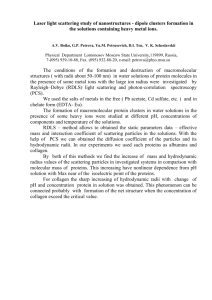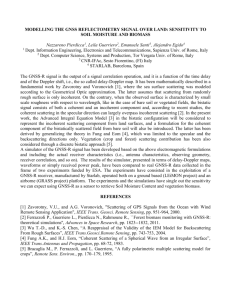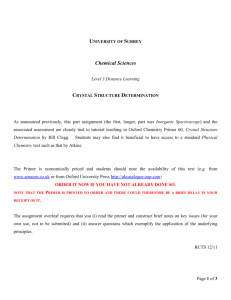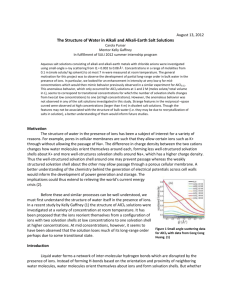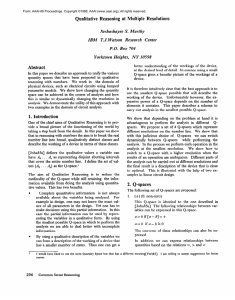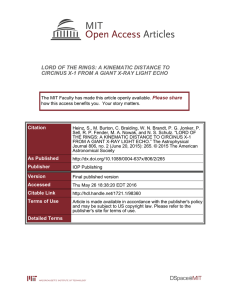Purser_Intro2012
advertisement
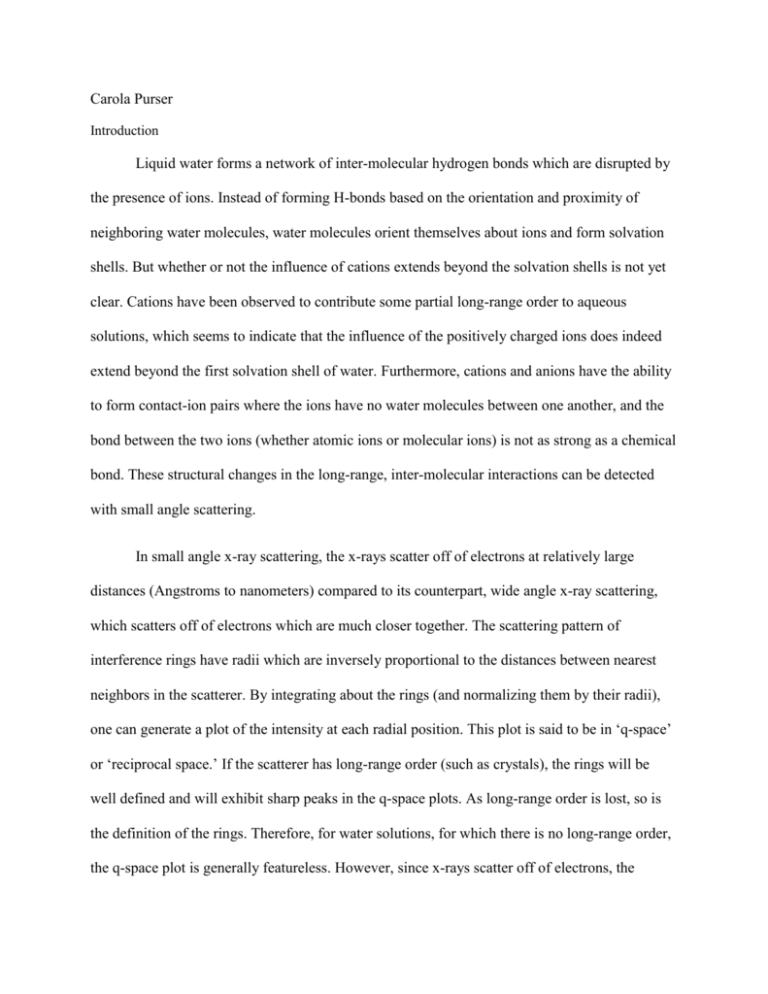
Carola Purser Introduction Liquid water forms a network of inter-molecular hydrogen bonds which are disrupted by the presence of ions. Instead of forming H-bonds based on the orientation and proximity of neighboring water molecules, water molecules orient themselves about ions and form solvation shells. But whether or not the influence of cations extends beyond the solvation shells is not yet clear. Cations have been observed to contribute some partial long-range order to aqueous solutions, which seems to indicate that the influence of the positively charged ions does indeed extend beyond the first solvation shell of water. Furthermore, cations and anions have the ability to form contact-ion pairs where the ions have no water molecules between one another, and the bond between the two ions (whether atomic ions or molecular ions) is not as strong as a chemical bond. These structural changes in the long-range, inter-molecular interactions can be detected with small angle scattering. In small angle x-ray scattering, the x-rays scatter off of electrons at relatively large distances (Angstroms to nanometers) compared to its counterpart, wide angle x-ray scattering, which scatters off of electrons which are much closer together. The scattering pattern of interference rings have radii which are inversely proportional to the distances between nearest neighbors in the scatterer. By integrating about the rings (and normalizing them by their radii), one can generate a plot of the intensity at each radial position. This plot is said to be in ‘q-space’ or ‘reciprocal space.’ If the scatterer has long-range order (such as crystals), the rings will be well defined and will exhibit sharp peaks in the q-space plots. As long-range order is lost, so is the definition of the rings. Therefore, for water solutions, for which there is no long-range order, the q-space plot is generally featureless. However, since x-rays scatter off of electrons, the scattering intensity increases as anions (Cl in this case) are added in solutions. Since this project is primarily interested in how the long range ordering of water changes as salts are added in solution, I will be looking more for changes in the shape of scattering q-space curves, and I will not be as interested in the change in intensity. Methods The parameters of interest are the charge density of the cation and the concentration of the solutions. The salts studied are LiCl, KCl, NaCl, MgCl2, and CaCl2 at concentrations 0.1, 0.2, 0.5, 1, 2, and 4 M. Since lithium, potassium, and sodium have the same charge (+1) but increasing volume, the charge density decreases (similarly for magnesium and calcium but with +2 charge). This experiment was conducted at the Stanford Synchrotron Radiation Lightsource (SSRL) 4-2 beamline (figure 1), which has small angle x-ray scattering (SAXS) capabilities. The 11 keV x-ray is generated via synchrotron radiation from the (SSRL) and it is subsequently focused and attenuated to a spot size ~0.2 mm. The scattering path length was about 0.75 m giving a q-range from 0 to about 0.8. A 1.5 mm quartz capillary tube held samples during the measurement. Samples were exposed to x-rays for 15 seconds for a total of 20 exposures at each concentration.
